#327 Site C boondoggle unravelled
June 22nd, 2018

Breaching the Peace: The Site C Dam and a Valley’s Stand against Big Hydro
by Sarah Cox
Vancouver: UBC Press (On Point Press), 2018
$24.95 / 9780774890267
*
Damming the Peace: The Hidden Costs of the Site C Dam
by Wendy Holm (editor)
Toronto: James Lorimer and Company, 2018
$22.95 / 9781459413160
Both books reviewed by Jonathan Peyton
*
*
Editor’s Note: Few reviewers could be better qualified to respond to two new books about the controversial Site C Dam project than Jonathan Peyton whose Unbuilt Environments: Tracing Postwar Development in Northwest British Columbia (UBC Press, 2017) was shortlisted for the Basil Stuart-Stubbs Prize for Outstanding Scholarly Book on British Columbia in 2018.
No mealy-mouthed academic, Peyton cites Premier John Horgan’s recent “cynical capitulation” and he brandishes historical assessments that do not mince words: “Take [W.A.C.] Bennett’s recipe for progress, add a few thousand oil and gas well pads, a few crisscrossing pipelines, sprinkle in a more egregious disregard of Indigenous rights, siphon it all through a legal process that ran roughshod over local and ecological concerns, garnish with a specious economic logic — and you have the modern incarnation of the Site C Dam” — Ed.
*
There’s a story told by historians Graeme Wynn and Tina Loo about former Premier W.A.C. Bennett’s first visit to Peace Country in the early 1950s.
Bennett had pulled his hulking car over to the side of a bluff overlooking the Peace River Valley. He was gazing down at valley below when he encountered a local trapper. Bennett asked his new acquaintance, “What do you see here?” The trapper, perhaps thinking that this stranger in a suit was a bit of an odd fellow, replied, “A small, winding, muddy river.”
Bennett, ever the visionary, had other, more grandiose ideas: “Well, my friend, I see dams. And I see power. And I see development. I see roads, highways, bridges, and growing communities. I see cities – prosperous cities with schools, hospitals and universities. I see beautiful homes with housewives baking bread.”
That anecdote, of course, reflects the optimistic vision of industrial development, the disregard for environmental impacts, and the faith in the idea of progress that so often characterizes metropolitan approaches to the provincial north in British Columbia.
Seven decades later, Gordon Campbell and Christy Clark made Bennett’s vision their own. Clark may have packaged the same pro-development vision in new and empty aphorisms like “Getting to Yes” or transcending “The Forces of No,” but the conservative politicos in Victoria, alongside their kindred spirits at BC Hydro, never lost sight of the goal of industrializing the Peace River.
All in the family: Premier Gordon Campbell announces the start of the Site C Project in April of 2010 with Brad Bennett, W.A.C.s grandson-at the Bennett-Dam. Jonathan Hayward photo, The Canadian Press.
Take Bennett’s recipe for progress, add a few thousand oil and gas well pads, a few crisscrossing pipelines, sprinkle in a more egregious disregard of Indigenous rights, siphon it all through a legal process that ran roughshod over local and ecological concerns, garnish with a specious economic logic — and you have the modern incarnation of the Site C Dam.
For those interested in the litany of questions raised by the recent (December 2017) Site C approval by John Horgan’s NDP government, Sarah Cox’s Breaching the Peace and the diverse essays collected in Wendy Holm’s Damming the Peace provide an important foundation of the knowledge, arguments, and ethics that shroud Site C construction.
At the very least, readers will be familiarized with the many dam-adjacent issues that range from unsettling to intellectually disingenuous to morally bankrupt.

Watson Slough. Important wetland conservation area which will be flooded by the Site C Dam. Garth Lenz photo.
A partial list of grievances addressed in these two volumes allows readers to learn about alterations to bird, fish, wildlife, and insect habitat and other challenges to regional biodiversity, including the destruction of Watson Slough, threats to Treaty 8 First Nations claims/rights, dubious economics and fudged finances, prospective environmental change, changes to salmon movement and river turbidity, inundation of rich agricultural lands, logging practices (involving the largest modern clearcuts in B.C.), erasure of archeological heritage including destruction of grave sites and fur trade posts, construction issues on shaky bedrock foundations (including “tension cracks” and landslides), inevitably rising final price tag, BC Hydro strategic overestimates of energy demands, financial and legal problems with the primary contractor, and the fact that other renewable sources can generate electricity more cheaply… and on and on.
Or readers may focus on politics and public policy. The political frame is particularly sharp in Cox’s Breaching the Peace, a book that should stand as an exemplar of clear-eyed, intellectually ambitious, and morally engaged long-form modern environmental journalism in B.C.
In Cox’s telling, we get a clear sense of the historical trajectory of the Site C, from W.A.C. Bennett’s northern industrial dreams, to Bill Bennett’s resuscitations of his father’s plans in the 1980s, to Clark’s attempts to bring the dam “past the point of no return,” to Horgan’s recent cynical capitulation in front of what can only be called the development “Forces of Yes” in B.C.
We meet lobbyists tasked with demonstrating the “common sense” of dam development (here’s looking at you, Bill Tieleman), hydropower industry figures who highlight the Site C dam’s supposed green energy bona fides, Hydro personnel and contractors tasked with proving the economic and environmental feasibility of Site C, and lawyers whose intellectual gymnastics turned treaty rights and constitutional protections into mere suggestions.
We are faced with the blunt power of legislative and regulatory reinvention: land designations under the Agricultural Land Reserve (ALR) reimagined with the strike of a pen and a change of a map, BC Hydro’s use of civil lawsuits to cower Peace River Valley landowners, the pretense of a B.C. crown corporation appealing to a BC utility (both arms of the same government) for permissions and approvals to use taxpayers’ dollars to build a megaproject with no demonstrated need and to circumvent environmental protections established by previous governments.
We see the larger scale effect of national policy changes as wholesale reforms to federal environmental protections under Stephen Harper come home to roost in the Peace, most directly resulting from changes to environmental impact assessment regulations. We get a glimpse of the opaque process of consultation, and how BC Hydro bureaucratese and empty slogans successfully bury dissent and opposition in “community engagement,” “growth potential,” and “energy security.” Each of Cox’s twelve chapters uncovers new dimensions to these stories.
The focus on politics and policy offers a lens that zeroes in on the long story of Site C itself but also places it in the much broader context of environmental politics, industrial development, and the accumulation of environmental knowledge. All of these contextual pieces are suffused with power. Cox shows how the history of dam development has built an aura of inevitability around dam construction. A curious contradiction emerges wherein the Site C process is ignorant of history and premised on ignoring history.
The historical lens, particularly in the contextual material offered in the prologue, gives the reader a sense of how Hydro has targeted other northern rivers along with the Peace over the past seventy years. (Readers interested in exploring the historical context of northern hydroelectric development in the Peace region and elsewhere should look for work by Meg Stanley, Tina Loo, Matthew Evenden, Nichole Dusyk, and others, alongside commentary from UBC geographer Karen Bakker that is put to good use in the text).
Cox’s narrative also raises questions about what environmental economists and geographers call path dependency, the idea that economic and environmental behaviours can be “locked in” by previous construction decisions or other behaviours: in other words, BC Hydro knows how to build dams and so they build dams, regardless of other possibilities and opportunities.
Indeed, path dependency is directly related to the developmentalist notion at the centre of the rationale for Site C — industrialization begets more development. This forces the reader to consider the connection between hydro development and the growth of the gas economy (read LNG and fracking) in the province’s northeast, and between hydro development and the increasing power demands of the Tar Sands.
Moreover, readers might consider the possible connections between Site C and similar tales of Hydro malfeasance in Manitoba (Keeyask) and Newfoundland and Labrador (Muskrat Falls).
A doom and gloom rendering of the Site C story, Breaching the Peace will give readers plenty of material to fuel the outrage at the Site C decision that has emerged across the province. But Cox also introduces us to many individuals who have fought against the dam and the public utility, in the process providing a powerful source of inspiration for those engaged in ongoing activism and advocacy around the development and its many environmental, economic, and social effects.
We meet Marc Eliesen, former CEO and President of BC Hydro (he held similar positions at Ontario and Manitoba Hydro), who calls the decision to cancel the project a “slam dunk” (p. 250). We meet Harry Swain (Joint Review Panel Chair), Harold Steves (Richmond City Councilor), and Richard Bullock (fired ALR Chair), all of whom advocated within the B.C. political system against the Site C “boondoggle,” and all of whom continue to use their various expertise to challenge BC Hydro’s construction plans.
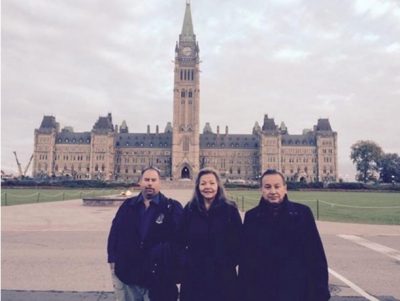
Indigenous opposition. West Moberly Chief Roland Willson, Fort Nelson Chief Liz Logan and Grand Chief Stewart Phillip in Ottawa, 2014
We meet an extraordinary group of Peace River Valley locals who are fighting against the imposed submersion of the valley they call home. Ken and Arlene Boon, West Moberly First Nations Chief Roland Willson, Helen Knott, and many others continue to show incredible resolution in the face of an aggressive, litigious, and single-minded utility. Grand Chief Phillip Stewart of the Union of BC Indian Chiefs continues to provide purposeful leadership in the assertion of Indigenous Rights. There are heroes to be found in Cox’s story.
British Columbians with an interest in environmental politics, public expenditures and our precarious energy futures should rush to buy this book. Indeed, Breaching the Peace is something of a narrative template for understanding the dozens, if not hundreds, of environmental conflicts across the province that play out along similar lines.
If Breaching the Peace traces the history and present (the “how we got here”), Wendy Holm’s Damming the Peace has its eye on the future — what will come if the dam is built? The book introduces a varied mix of experts and interested parties, all presenting aspects the case against Site C, and all tasked with examining the “hidden costs” of dam construction. A number of contributions are worth highlighting, each developing a different narrative strategy to make their point, each offering the reader a unique narrative and topical mode to sink their teeth into.
Guy Dauncey provides an exhaustive examination of the underlying numbers related to B.C. power needs and capabilities to set up a list of questions: how much electricity will B.C. need? Who will use it? How much energy can renewables produce? Is that renewable energy dispatchable? Is it possible for B.C. to transition to a renewable energy economy, provided the province has the political and/or institutional leadership?
David Schindler argues more generally that Hydro is not as green as often claimed and is also inevitably more expensive than other sources. He details problems of increased mercury, decimation of fish populations and obstruction of fish migration, and fragmentation of watersheds. He considers the larger geographic scale of destruction in the Peace River Delta as the river moves across northern Alberta. Schindler’s commentary suggests that scale and geography are important to understanding these problems — they can be understood locally, but also far more broadly as effects cascade out from dams themselves.
Zoe Ducklow provides a kind of forensic accounting of Hydro’s claims, including diverse perspectives from Indigenous peoples, economist and others, while Andrew MacLeod’s contribution reinforces the sense of optimism provided by people like Helen Knott, the primary subject of his piece, and other committed and inspiring on-the-ground actors in the Peace.
Other contributions focus on the role of information, or perhaps more directly, misinformation. Brian Churchill shows how the importance of biodiversity was systematically ignored in the various assessments, while Briony Penn reinforces the importance of accounting for cumulative impacts, suggesting that the strategic failure of a cumulative impact assessment model reduces the complexity of environmental assessments and fails to account for multiple worldviews.
Joan Sawicki references the same type of rhetorical potential of simplification in her analysis of the importance of the Peace River Valley microclimate. She references “the information gaps and inadequacies, data manipulation and creative diversions perpetrated by BC Hydro.…” (p. 118), alongside the “statistical confusion, misrepresentation of facts, false comparison and invalid modeling” (p. 122) that the utility mobilized to prove that Site C was viable.
Yet other contributions in Damming the Peace highlight the larger scale worst-case scenario. Joyce Nelson presents a harrowing speculative account of continental scale water export, with Site C as the infrastructural nexus of inter-basin water exchange. In other words, Nelson shows that Site C is the essential piece of infrastructure to enable the privatization and trade of fresh water between Canada and the United States. In this potential future, Site C will be at the centre of a new water-based geopolitics of North America.
Andrew Nikiforuk connects Site C to the scaling up of a fracking economy in northeast B.C., suggesting that residents should expect increased seismicity along with the potential for water contamination and pipeline spills. Nikiforuk also considers Site C within the more complex national story of building dams in the north to supply power for the south, suggesting (p. 159) that:
Any honest ecological rap sheet on Canada’s record of dam building would show numerous convictions for Aboriginal treaty-breaking, water theft, water contamination (methylmercury) and the serial murder of wildlife. The controversy of the Site C dam is an unsettling reminder that Canada remains an unrepentant repeat offender.
For Nikiforuk, the Site C story is a fundamentally Canadian story. It has played out across the northern regions of the country in dams, mines, pipelines, and oil and gas plays.
Breaching the Peace and Damming the Peace are remarkable for highlighting how much we don’t know about potential effects — we simply do not have enough data to make informed decisions about what is to be gained and what will be lost in the construction of Site C.
Careful readers will also get a sense of the interconnections of ecological, economic, cultural, aesthetic, and agricultural values that are embedded in the landscape of the Peace River Valley. These values cannot be valued in a monetary sense. It is for British Columbians to determine what they are willing to sacrifice for the ephemeral possibility of economic growth.
It is clear that Premier Horgan was faced with an exceedingly complex political decision when he assembled the media to announce that the project would go ahead despite escalating budget overruns, significant construction obstacles, resilient local and metropolitan opposition, and ongoing legal challenges from Indigenous peoples.
Yet, as the contents of these two books show, the decision to continue with the construction of Site C is unjustifiable on multiple grounds. We can let Sarah Cox (p. 245) have the last word:
In essence, the government had stated that, in order to pay for capital projects like schools and hospitals, it would be willing to violate basic human rights, ignore treaty rights protected under the Canadian Constitution, destroy a valley and its communities, remove the largest chunk of land in history from the agricultural land reserve that a previous NDP government had created, and eradicate a critical habitat for more than one hundred species vulnerable to extinction….
As Christopher Pollon has stated, the Peace is in peril.[1]
One can only hope that British Columbia can hear about these books, find ways to buy, get informed, tell their friends and save the Peace.
*
A graduate of the universities of Victoria and British Columbia, Jonathan Peyton is Assistant Professor in the Department of Environment and Geography at the University of Manitoba. He researches resource development conflicts and energy infrastructure megaprojects in northwest B.C. and subarctic North America. His book Unbuilt Environments: Tracing Postwar Development in Northwest British Columbia (UBC Press, 2017), was shortlisted for the Basil Stuart-Stubbs Prize for Outstanding Scholarly Book on British Columbia in 2018.
*
The Ormsby Review. More Books. More Reviews. More Often.
Reviews Editor: Richard Mackie
Reviews Publisher/designer: Alan Twigg
The Ormsby Review is a journal service for serious coverage of B.C. books and authors, hosted by Simon Fraser University. The Advisory Board consists of Jean Barman, Robin Fisher, Cole Harris, Wade Davis, Hugh Johnston, Patricia Roy, David Stouck, and Graeme Wynn. Scholarly Patron: SFU Graduate Liberal Studies. Honorary Patron: Yosef Wosk. Provincial Patron (as of September, 2018): Creative BC.
“Only connect.” – E.M. Forster
[1] Christopher Pollon and Ben Nelms, The Peace in Peril (Harbour: 2016).
The Boon family farm, looking south, July 2016. John Gellard photo.

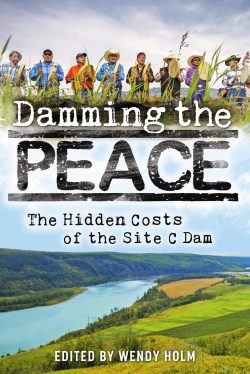



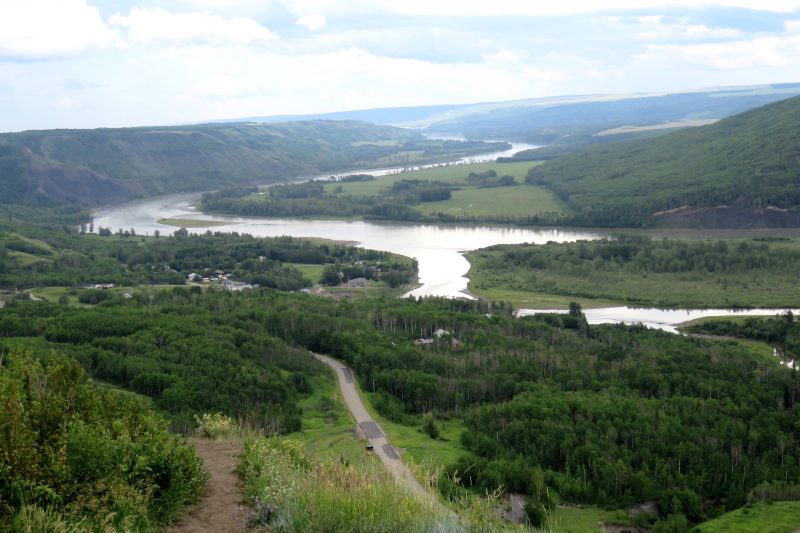
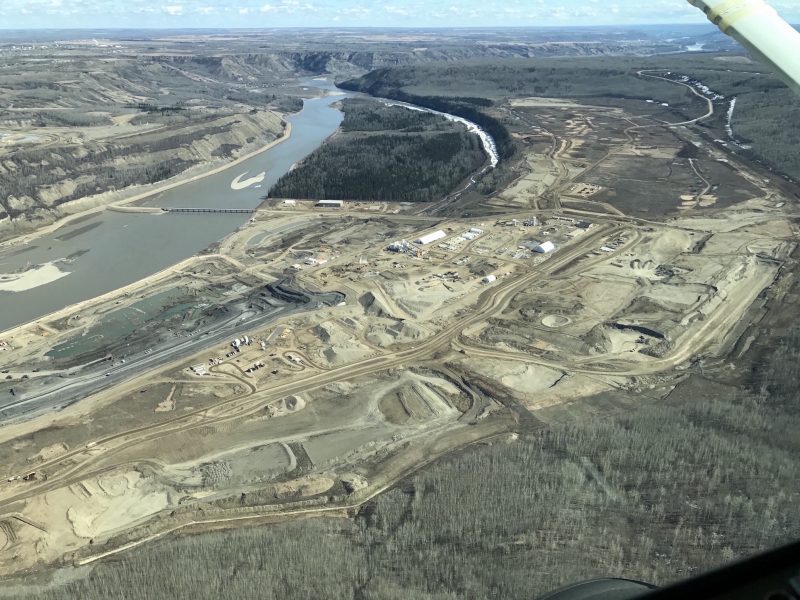







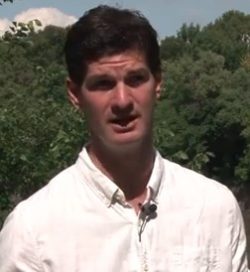
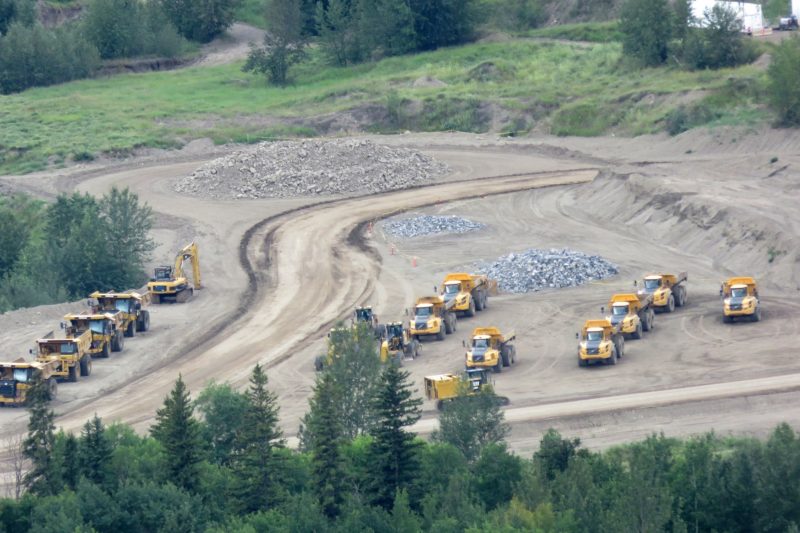

Leave a Reply